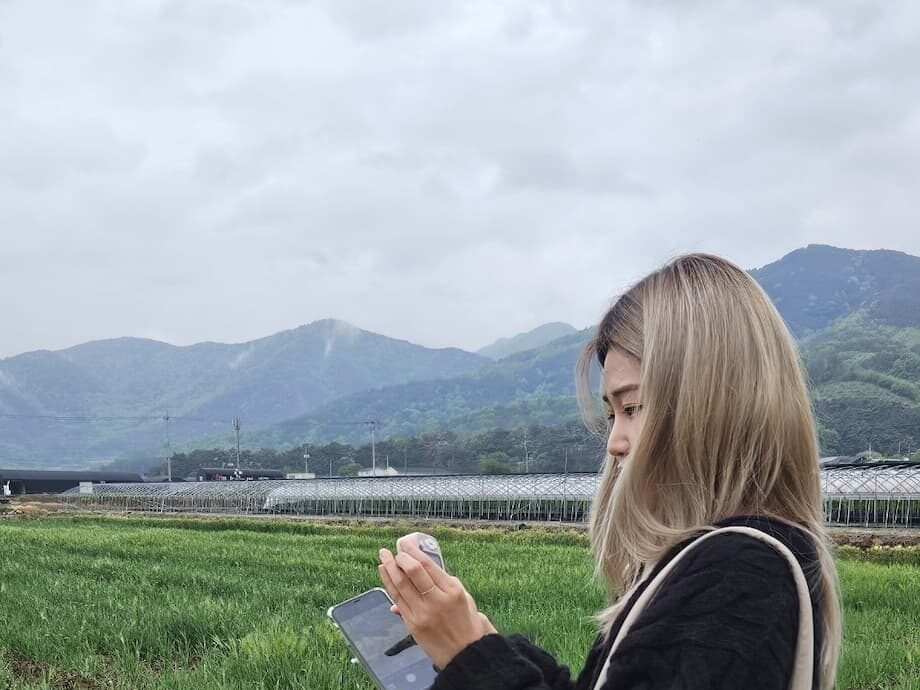Why more young Koreans are stepping away from work
A record number of young South Koreans are pressing pause on work and job hunting. In July 2025, Statistics Korea counted about 421,000 people in their twenties who reported that they were just resting, a label used in official surveys for those who are neither employed nor actively looking for a job without a specific reason. Many hold university degrees and have already cycled through internships or short contracts. Their break is rarely carefree. For many, it is a survival strategy against unrelenting pressure, a punishing recruitment gauntlet, and the fear that one wrong step can define a career.
- Why more young Koreans are stepping away from work
- What just resting means and how it is measured
- Pressures that push young people to pause
- A wage and benefits gulf across companies
- Mental health, loneliness, and social withdrawal
- Not laziness, a structural problem say experts
- Policies and programs now on the table
- What could reduce the resting trend
- At a Glance
Stories like that of Park Min-jin, a graduate who sent dozens of applications and advanced to final interviews only to be rejected repeatedly, are common. After years of high-stakes exams, stacked extracurriculars, and marathon hiring rounds, she stopped looking. Friends and family might call it rest. Much of it feels like exhaustion and uncertainty. The broader picture points to a structural challenge, not a sudden outbreak of idleness.
What just resting means and how it is measured
Just resting is part of South Koreas official classification of economically inactive people. It covers those who are not in a job, not trying to find one, and not citing a specific reason such as schooling, caregiving, or illness. The group overlaps with the global NEET concept (not in education, employment, or training), though the survey language in Korea is narrower because respondents select rest as their stated reason. Many in this category have prior work experience and degrees, and they often describe their pause as a way to recover before trying again or to reassess their path.
The numbers and the recent record
The total in July 2025 set a record for people in their twenties reporting rest, and the figure is about 58 percent higher than a decade earlier, according to international reporting on Korean labor data. Separate local coverage notes that the number of young adults saying they are resting has risen even as the youth population shrinks. The trend has grown persistent, tracking changes in hiring and repeated cycles of job searching that many describe as reemployment burnout.
Pressures that push young people to pause
The roots start early. South Korean students grow up in a high-intensity system shaped by rankings, the national college exam (Suneung), and fierce competition for a small number of prestigious university places. Families invest heavily in private after-school academies, and young people often internalize the idea that every test score, every extracurricular, and every internship must point toward a narrow definition of success. By graduation, many have collected credentials but are running on fumes.
A grueling school to job pipeline
The hiring process itself can be a marathon of essays, aptitude exams, coding or case tests, and multiple interviews. Applicants may send out dozens of resumes and advance to final rounds but still walk away empty-handed. The cycle repeats, and with it the stress of constant evaluation. Research and local reporting describe a growing sense of burnout that pushes some to stop searching rather than compromise on a first step they fear could mark them for years.
Why first jobs and big names carry oversized weight
In Korea, the name of a first employer or the prestige of a university can shadow a resume for a long time. Many applicants aim for large companies that pay more and offer stronger benefits and training. Offers from small and medium firms are often seen as risky due to lower wages, weaker benefits, or rigid cultures. Individuals describe reluctance to settle for a position they believe will limit future options. The result is a widely shared strategy of waiting for better opportunities, even when that wait stretches for months.
A wage and benefits gulf across companies
Behind the preference for large firms is a deep divide in pay and security. The wage gap between small and large companies is regularly described as stark in labor research and news coverage. Big employers tend to offer higher base salaries, performance bonuses, better leave, and clearer promotion tracks. Smaller firms struggle to match those packages, and they often seek experienced hires to reduce training costs. Young graduates then face a Catch-22. They need experience to get hired, yet they need to get hired to gain experience.
Small firms versus large conglomerates
University reporting and local labor analysis add another twist. As more companies recruit as needed instead of through large seasonal intakes, fresh graduates see fewer entry points. Employers increasingly prefer applicants with relevant experience, and the number of firms prioritizing experience has grown. Many young job seekers chase internships and part time roles to fill the gap, but those slots are limited. Some even calculate that low pay at smaller firms is not much higher than part time work, which can look more attractive in the short run. That calculus delays stable employment and keeps many in a holding pattern.
Mental health, loneliness, and social withdrawal
Resting is not the same as retreating from society, yet the two issues can overlap. A government study cited by national media estimated that by 2021 about 540,000 young people aged 19 to 34 were at risk of isolation or seclusion, with roughly 244,000 already showing signs of seclusion. Another survey found that 24.1 percent of reclusive youth began isolating after trouble finding a job. Research reported by international outlets shows the toll on health is severe, with nearly 60 percent rating their health as poor and three in four reporting suicidal thoughts. These figures do not map perfectly to the just resting group, but the stressors involved are often the same.
Some personal accounts illustrate how a pause can slide into isolation. Wren Jun, interviewed by ABC in Australia, first began retreating as a teenager and spent months living inside a closet. The pressure outside felt overwhelming, he said, and years later he still struggles to leave home. His description of the outside world captures how failure in school or work can compound fear rather than build resilience.
Wren said the idea of going out remained frightening long after the initial retreat. That fear eased only when he found a community group tailored to reclusive youth. He left early, but the experience showed him where to seek help when ready. Others, like Kim Cho-Rong, spent years at home before reentering society and now work to support peers through community initiatives.
Researchers stress that reclusion has many causes, from family trauma to economic setbacks, and that recovery works best when stigma falls away. The concept of a social role looms large. Without a role to play each day, it becomes easier to step out of public life and much harder to step back in.
Kim Seonga, a research fellow at the Korea Institute for Health and Social Affairs who helped conduct the national survey, argues that the pressure points are structural rather than individual.
Dr Kim Seonga said: “The most important cause is the lack of a social role. Even if reclusive youth submit hundreds of resumes, it is very difficult to get a decent and stable job.”
For those stuck between job hunts and long spells at home, fear can be visceral. A young adult described the feeling to ABC with stark simplicity.
Wren said: “The outside world is so terrifying, and it is so unfamiliar.”
After returning to work, Cho-Rong reflected on how isolation felt during her hardest period.
Kim Cho-Rong said: “Sometimes I felt like a bug that slept all day. If you touch a bug, it moves. And I was like that, I would react to touch.”
Not laziness, a structural problem say experts
Specialists point to a web of factors that make rest feel like the only safe option. The labor market is polarized, the school system prizes ranking, and social media magnifies comparison with peers. Repeated rejections chip away at confidence, and many young people set high standards for themselves because they have internalized family and social expectations. That mix creates hesitation and inertia. Pausing is a form of self-protection, and labeling it as a personal flaw misses the point.
Associate Professor Jo Elfving-Hwang at Curtin University studies Korean society and culture. She underlines the mismatch between training and opportunity.
Dr Jo Elfving-Hwang said: “Korea has got a very highly educated young labour force. They would like to find jobs that match their educational level, and there just aren’t enough ongoing job opportunities.”
Policies and programs now on the table
Some government programs already target the pressures behind youth pauses. The Ministry of Employment and Labor funds psychological stability services for long-term job seekers, including counseling for depression and stress and support to regain motivation. There are customized services for students that pair career coaching with field experience, and an Onboarding Program to help new hires adapt to workplace norms and stay employed. Public agencies and universities have expanded practical skills training and early career advising.
Community groups are also filling gaps. Nonprofits in Seoul and other cities organize short-stay shared housing, gentle social activities, and job practice programs for youth who feel stuck at home. Participants meet peers who share similar experiences, which lowers the barrier to trying new routines. ABC profiled Not Scary, a group that connects young recluses and runs transitional living options. Staff who have recovered from isolation now help others map a path back to society.
Policymakers are debating a broader response. Yonhap reported that a senior politician floated the idea of a dedicated official for loneliness, a model already tried in Britain and Japan, to coordinate ministries on education, jobs, welfare, and housing. Authorities plan a nationwide survey on reclusion that covers everyone over 13, which could sharpen the view of how inactivity, isolation, and mental health overlap. Other initiatives range from outreach programs and public awareness campaigns to small nudges such as meal vouchers that encourage young people to step outside and share time with others.
What could reduce the resting trend
Reducing the pressure to pause starts with more and better first jobs. Large firms can deepen graduate intakes and expand structured training so that potential is valued alongside prior experience. Small and medium companies can receive targeted support to raise starting pay and improve benefits, including subsidies tied to training plans, mentorship, and wage floors. Industry bodies can set practical standards for internships and entry level roles so that early employment builds skills rather than filling gaps in a tight labor market. Hiring systems can also be made less draining by simplifying application steps, reducing duplicative tests, and widening the window for holistic review.
Experience-first recruiting makes sense for employers, but it can close doors to new graduates. A stronger bridge from school to work would include paid apprenticeships that combine classroom training with rotations in different departments. Universities can expand career counseling earlier in degrees, teach realistic job search strategies, and connect students to alumni networks outside elite channels. Public support for counseling and mental health care can help young people recover from burnout and rebuild routines without stigma. A culture shift is part of the solution too. If first jobs matter less for a lifetime, fewer graduates will feel forced to hold out for a top brand at any cost.
Finally, language matters. Treating rest as a shameful status deepens anxiety. Framing it as a temporary phase can turn it into an active plan. Many young Koreans who paused report that they used the time to explore interests, volunteer, write, or test new fields. The bridge back to work is easier to cross when society leaves room for detours.
At a Glance
- About 421,000 people in their twenties reported just resting in July 2025, the highest on record.
- The total is roughly 58 percent higher than a decade earlier despite a shrinking youth population.
- Just resting refers to economically inactive youth who are not working or job hunting and who cite rest as their reason.
- Wage and benefit gaps between small firms and large companies push many to wait for big-name jobs.
- Hiring has shifted toward experience-first and recruitment as needed, limiting entry points for new graduates.
- Government surveys estimate 540,000 young people are at risk of isolation, and many began isolating after job search failures.
- Experts stress structural causes: constant evaluation, a stratified labor market, and high expectations at home and in school.
- Responses include counseling, onboarding programs, community support groups, and proposals for a coordinated approach to loneliness.












